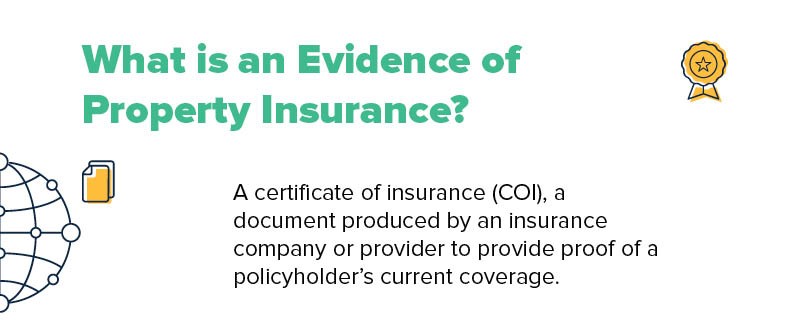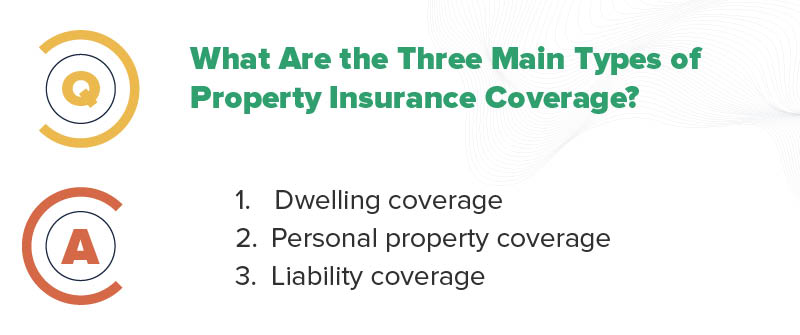
Carrying adequate property insurance is important for anyone who owns expensive property, whether that be in the form of a car, a house, or other assets. In the cases of fires, human accidents, burglary, or other damages, only insured property will be financially protected. That’s why personal and business insurance coverage is so important.
In this blog, we’ll discuss this crucial type of coverage, as well as how you can prove that you have it through a certificate of property insurance. For more informative resources, be sure to follow along in our Certificates of Insurance 101 guides to get the COI basics you’ve been missing.
What is an Evidence of Property Insurance?
Property insurance is coverage extended to physical assets, such as buildings, expensive items, and even personal belongings. Evidence of property insurance is required in various situations to demonstrate that a property, such as a home or commercial building, is adequately insured. (Often, but not always, evidence of liability coverage is required along with property insurance.)
To provide evidence of any insurance policy, we turn to an important item called a business certificate of insurance (COI), a document produced by an insurance company or provider to provide proof of a policyholder’s current coverage. A property insurance certificate is a quick way on how to verify insurance coverage and details. A certificate of property insurance, specifically, acts as evidence of an individual or business’s property insurance. A certificate of insurance typically will include coverage details such as certificate holder, coverage limits, terms, policy numbers, and more that provide a snapshot of someone’s coverage.

What Is the ACORD Certificate of Property Insurance?
The producer of the standardized COI forms we know and use today is a nonprofit organization called ACORD, which was formed when a group of industry professionals got together in the 70s to create more standardization throughout the industry. One of the biggest improvements that they made to the insurance space has been the creation of standard insurance certificate forms, one for each kind of policy. That’s why you’ll hear terms like ACORD 25 and ACORD 17 thrown around; they each reference different kinds of COIs based on the actual insurance policy type.
The certificate of property insurance (ACORD 24 form) is the document people use to reflect the status of their personal property insurance coverage. There is also the certificate of commercial property insurance (ACORD 28 form), as well as the evidence of property insurance form (ACORD 27).
To peruse a certificate of property insurance sample, which is not a fillable online form but rather an informative tool, you can find one through the ACORD forms portal. Remember that as the creator and standardizer of these documents industry-wide, they are the only authoritative source for COI samples and documents. Also, recall that only the insurance agent or firm providing a policyholder with coverage has the authority to generate a COI corresponding to that policy.
What Is an Example of a Property Insurance Policy?
Let’s walk through an example of property insurance coverage through a common type of it: homeowners insurance.
Let’s say that you’ve moved into a new home and wish to protect your residence and the valuables in it. You would go to your insurance provider (or find a new one) to issue you this policy. Your policy includes protection against damaging incidents like fire, theft, vandalism, and certain natural disasters. Homeowners insurance also often includes liability coverage, which protects the homeowner if someone is injured on the property and files a lawsuit, so your policy reflects this as well.
Now, let’s say that a fire breaks out in the kitchen, and your new house is damaged and badly burned. Your homeowners insurance policy will cover the cost of repairing or rebuilding the home as well as the cost of replacing your personal belongings damaged in the fire. Additionally, if a visitor is injured on the property, the liability coverage within the policy would help cover medical expenses and legal costs if the injured party sues you for damages. Good thing you got that policy!
What Are the Three Main Types of Property Insurance Coverage? Is Liability Insurance One?
There are a few common kinds of property insurance policies that exist to cover different aspects of one’s holdings. The three main types of property insurance coverage are:
- Dwelling coverage. This is a fundamental piece of homeowners insurance, protecting the physical structure of the insured property.
- Personal property coverage. Also known as contents coverage, this type of asset insurance protects belongings inside of the insured dwelling.
- Liability coverage. Liability coverage provides financial protection if a policyholder damages their property or injures someone else on it. This coverage is not limited to incidents that happen within the insured property.

How myCOI Can Help
Need help managing your certificates of property insurance for various vendors and insured properties? Want to make sure that your vendors and third-party service providers are compliant within your industry? Wish you had a team of industry experts backing you up with warrantied decisions? myCOI is the certificate management tool for you. Book a demo with us today to learn more about how we can help you get your COI management on track.